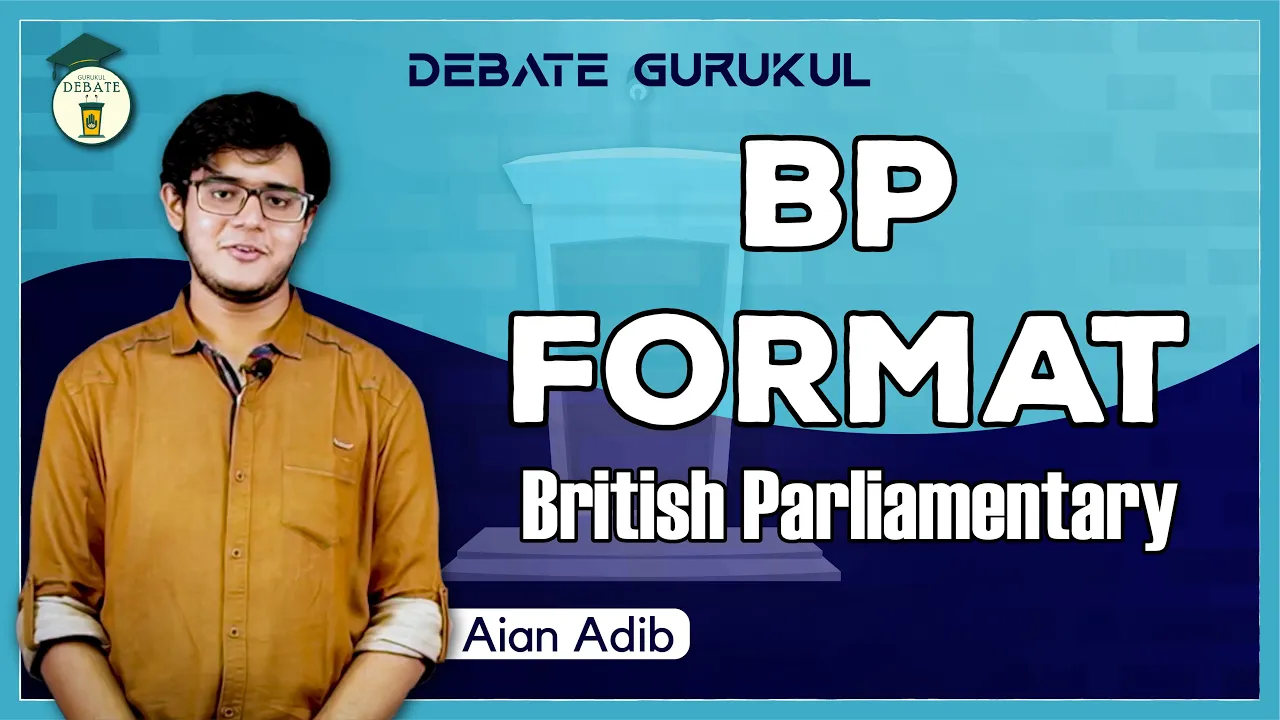BP Format [ British Parliamentary ] is the topic of today’s video. “BP Format [ British Parliamentary Debate ]” is the 8th class of our new series “Introduction to English Debating”. We are currently publishing a series called “Introduction to English Debating”. In this series, you will get to know all about English Debating.
BP Format [ British Parliamentary ]
British Parliamentary style is a major form of academic debate that originated in Liverpool in the mid-1800s. It has gained wide support globally and is the official format of the World Universities Debating Championship (WUDC).
British Parliamentary debates consist of four teams, containing two speakers each, which are divided into two sides that speak for and against the motion. Due to the style’s origins in British parliamentary procedure, the two sides are called the Government and the Opposition. Similarly, sides are known as benches, consisting of two teams – an opening team and a closing team.
Teams compete against all three other teams in the round, including against its own opening or closing team, which it is not expected to help. The order of speeches alternates between the two benches, starting with the first government speaker, until all eight participants have spoken. Speeches are usually either five or seven minutes in duration.

Whip speeches
The final speaker from each bench is known as the Whip. Whip speakers cannot add new arguments, and must instead summarize, frame, and weigh the arguments presented in the debate in a way that shows that their team (Closing Government or Closing Opposition) wins the debate.
Points of Information
Speakers in the BP format can offer Points of Information (POIs) to opposing teams. To offer a POI during another speaker’s speech, a debater may stand, say something such as “Point” or “Point of Information”, and wait to be called on. The speaker may accept, reject, or ignore the POI. If they accept, the individual who offered the POI may state an argument, a rebuttal, or ask a question to the speaker for up to 15 seconds or until interrupted by the speaker. Speakers may reject POIs with a physical cue (e.g. waving one’s hand) or a verbal indication of rejection.
Speakers are granted “protected time”, during which no points of information may be offered. Most commonly, this is the first and last minute of a speech.
Only speakers from the opposing bench may offer POIs to the current speaker. Speakers on the same side of the motion cannot do so even if they are from different teams (e.g. Opening and Closing Government may offer POIs to Opening Opposition, but Closing Opposition cannot).
Structure Of A Reply Speech Details :
Read more:

